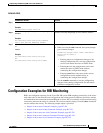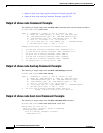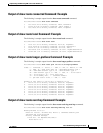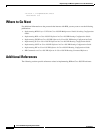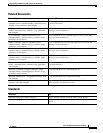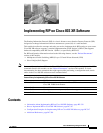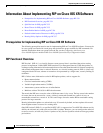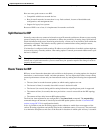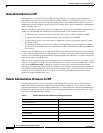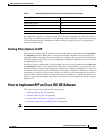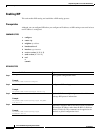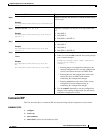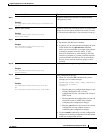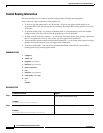
Implementing RIP on Cisco IOS XR Software
Information About Implementing RIP on Cisco IOS XR Software
RC-335
Cisco IOS XR Routing Configuration Guide
OL-14356-01
Here are some good reasons to use RIP:
• Compatible with diverse network devices
• Best for small networks, because there is very little overhead, in terms of bandwidth used,
configuration, and management time.
• Support for legacy host systems
Because of RIP’s ease of use, it is implemented in networks worldwide.
Split Horizon for RIP
Normally, routers that are connected to broadcast-type IP networks and that use distance-vector routing
protocols employ the split horizon mechanism to reduce the possibility of routing loops. Split horizon
blocks information about routes from being advertised by a router out of any interface from which that
information originated. This behavior usually optimizes communications among multiple routers,
particularly when links are broken.
If an interface is configured with secondary IP addresses and split horizon is enabled, updates might not
be sourced by every secondary address. One routing update is sourced per network number unless split
horizon is disabled.
Note The split horizon feature is enabled by default. In general, we recommend that you do not change the
default state of split horizon unless you are certain that your operation requires the change in order to
properly advertise routes.
Route Timers for RIP
RIP uses several timers that determine such variables as the frequency of routing updates, the length of
time before a route becomes invalid, and other parameters. You can adjust these timers to tune routing
protocol performance to better suit your internetwork needs, by making the following timer adjustments
to:
• The rate (time in seconds between updates) at which routing updates are sent
• The interval of time (in seconds) after which a route is declared invalid
• The interval (in seconds) during which routing information regarding better paths is suppressed
• The amount of time (in seconds) that must pass before a route is removed from the RIP topology
table
• The amount of time delay between RIP update packets
The first four timer adjustments are configurable by the timers basic command. The output-delay
command changes the amount of time delay between RIP update packets. See the “Customize RIP”
section on page RC-339 for configuration details.
It also is possible to tune the IP routing support in the software to enable faster convergence of the
various IP routing algorithms and quickly drop back to redundant routers, if necessary. The total result
is to minimize disruptions to end users of the network in situations in which quick recovery is essential.



